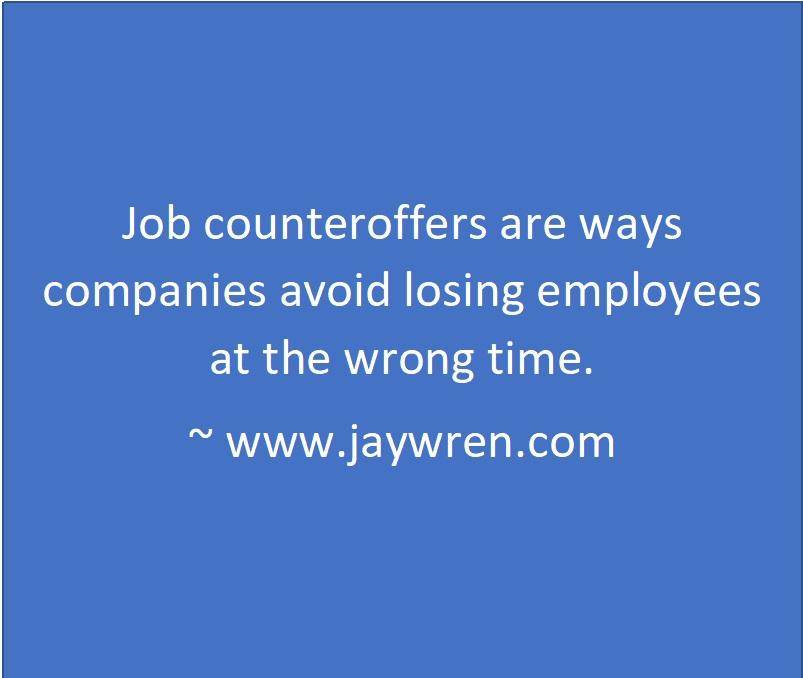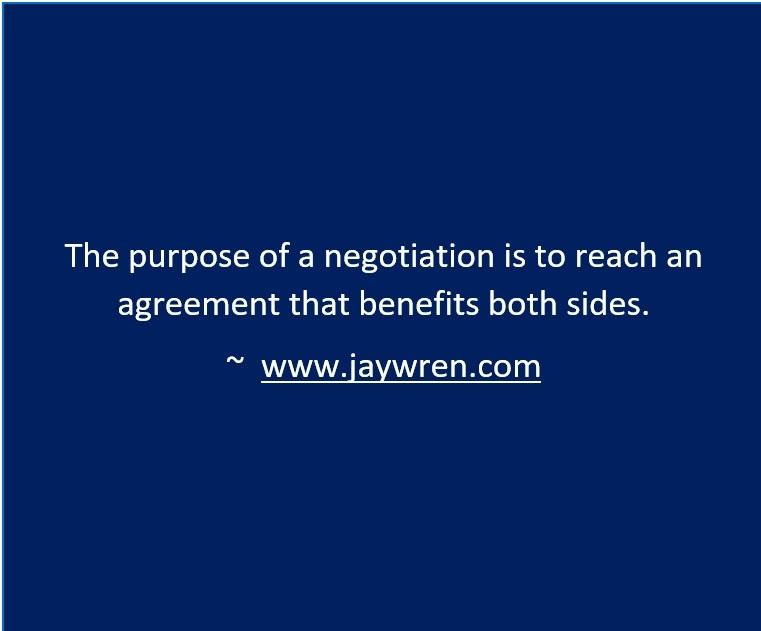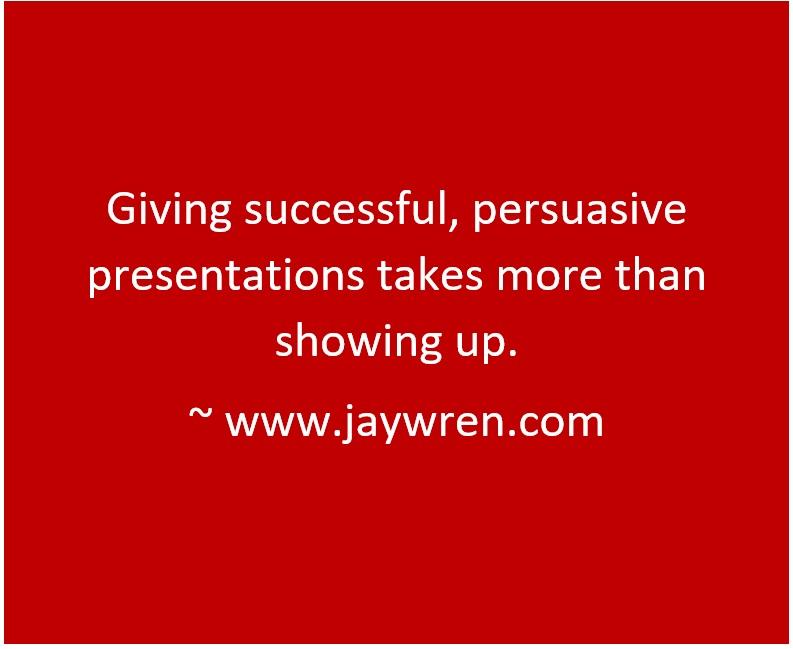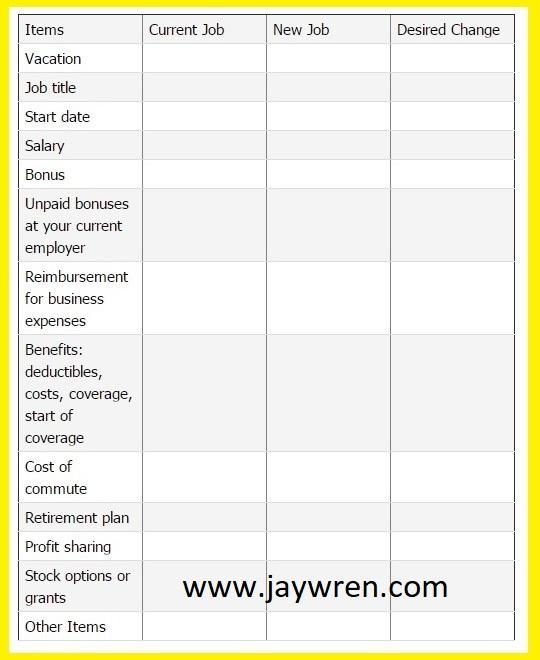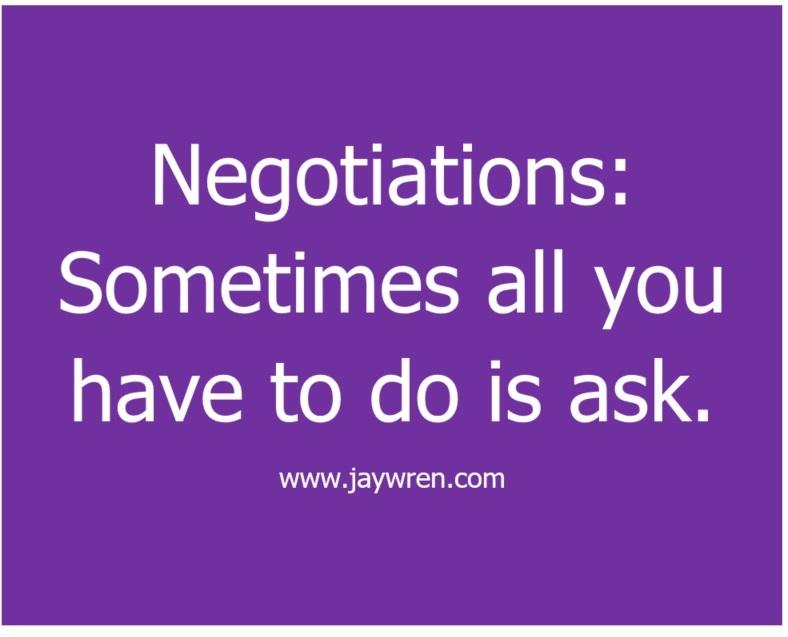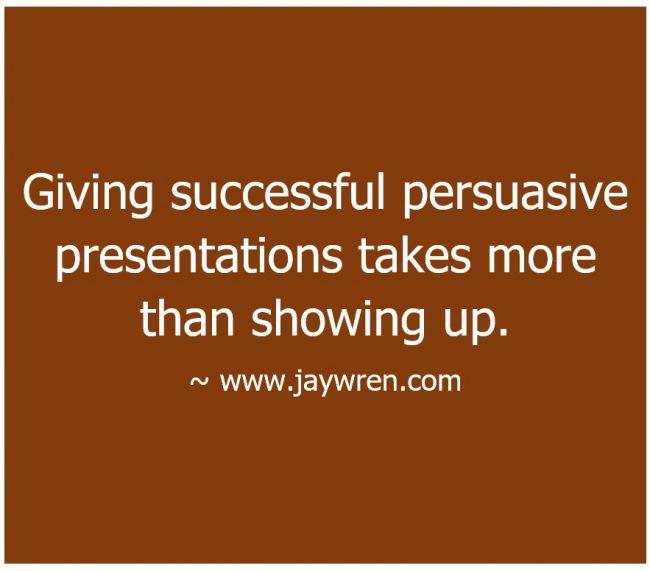Salary Increases: Some people recommend changing jobs every few years solely for an increase in base pay. The benefits could make a difference of tens of thousands of dollars. Most companies give pay raises of three percent. On the other hand, in changing jobs, you could see salary increases of 10 to 15 percent. Additionally,…… Continue reading Salary Increases: Changing Jobs for More Money
Category: Negotiation
Develop the powerful skills of negotiation that all great business leaders use
Counteroffers: Should You Stay or Should You Go?
Job counteroffers are ways companies avoid losing employees at the wrong time. ~ www.jaywren.com Counteroffers When you resign, should you consider a counteroffer? You have packed your bags. You are ready to walk out the door. Then, your boss tries to convince stay. Before you resign, prepare to deal with a counteroffer. You may never…… Continue reading Counteroffers: Should You Stay or Should You Go?
Negotiation: Communications with the Intention of Reaching an Agreement
Negotiation begins with the ability to see solutions for the people across the table. Whether you are offering a service or a product, your success will depend on solving problems. The purpose of a negotiation is to reach an agreement that benefits both sides. How do successful companies see, create, present, and deliver solutions? ~ www.jaywren.com…… Continue reading Negotiation: Communications with the Intention of Reaching an Agreement
Listening and the Persuasive Power of Asking Questions
Listening: What is the role of asking questions and listening in creating cooperation? Here are examples of how great questions lead you to getting what you want when you understand what other people need. The most effective people know how to ask great questions and how to learn from listening. ~ www.jaywren.com In the Workplace,…… Continue reading Listening and the Persuasive Power of Asking Questions
Persuasive Presentations: 10 Powerful Steps to Success
Giving successful persuasive presentations takes more than showing up. ~ www.jaywren.com Persuasive Presentations What are the things that make persuasive presentations successful? How can you persuade your audience to accept your proposal? Here are 10 powerful steps for giving a persuasive presentation. Whether you are in an salary negotiation, business meeting, or sales call, these…… Continue reading Persuasive Presentations: 10 Powerful Steps to Success
When Leaving a Company: How to Say Goodbye Gracefully
A former employer is a future reference. ~ www.jaywren.com When Leaving a Company, knowing how to say goodbye gracefully is important. What are the do’s and don’ts of an exit interview? When Leaving a Company, there are things to do and things not to do. Using these techniques will reduce the stress for you and…… Continue reading When Leaving a Company: How to Say Goodbye Gracefully
Negotiating Job Offers: An Outline for Getting What You are Worth
Negotiating Job Offers: An Outline for Getting What You are Worth. Negotiating Job Offers: An Outline for Getting What You are Worth. The increase you get when you start a job compounds into thousands of dollars over time. Negotiating Job Offers: Begin with the Facts Employers are more open to negotiating a job offer when…… Continue reading Negotiating Job Offers: An Outline for Getting What You are Worth
Negotiations: Why do Americans struggle to negotiate?
Negotiations: Why do Americans struggle to negotiate? Negotiation is a skill. You can learn it. A few negotiation skills can help us in all aspects of our lives. In some countries, people regularly negotiate retail prices. Yet in America, many people are frightened of the idea of asking for people to negotiate with them over a…… Continue reading Negotiations: Why do Americans struggle to negotiate?
The Seven Steps of a Persuasive Presentation
When I worked at Procter & Gamble, I took a sales training course that included a presentation model that works for any situation. Procter & Gamble titled the model the 5-Steps to persuasive selling. Xerox had actually developed the original course as the 7-steps to professional selling (PSS). Let us say that tomorrow you have…… Continue reading The Seven Steps of a Persuasive Presentation
Why You Should Never Accept A Counter Offer When You Resign
Why You Should Never Accept a Counter Offer When You Resign Counter offers are risky. The reasons you resigned seldom goes away if you stay. In addition, when you met with your boss to turn in your resignation, you showed your boss that you have been disloyal by interviewing for another job. However, your boss…… Continue reading Why You Should Never Accept A Counter Offer When You Resign
Things to Understand About a Job Offer
Things to understand about a job offer Disclaimer: Federal and state laws change. I am not a lawyer. At the bottom of this article, I have posted a link to a source for information. The points in this article will helpful lead readers to find the information they need. A job offer is more than…… Continue reading Things to Understand About a Job Offer
How To Negotiate A Job Offer
How To Negotiate A Job Offer: An Outline for Getting What You are Worth. Employers are more open to negotiating a job offer when they can see that there is a real shortfall between what they have offered you and what you have in your current job. The simple way to approach the matter is…… Continue reading How To Negotiate A Job Offer
Jobs: How to Negotiate Anything from Pay Raises and Promotions to Job Offers
How to Negotiate Pay Raises, Promotions, and Job Offers Whenever you negotiate anything, do your research. For example, when negotiating a pay raise, research the salary range of your job. If you have an open, comfortable relationship with the human resources, simply ask for the salary range for your job. Some companies publish internal information…… Continue reading Jobs: How to Negotiate Anything from Pay Raises and Promotions to Job Offers
Should You Discuss Your Income?
Should you be prepared to discuss your income? My answer as a veteran headhunter is that you should discuss your income only if you want to get an interview. I have placed 100’s of applicants with dozens of companies. I never referred an applicant for an interview without first knowing that person’s income. What are…… Continue reading Should You Discuss Your Income?
Counter Offers: The Reason That You Resigned Seldom Goes Away If You Stay.
The simple fact is that companies employ people at the convenience of the company. As soon as the company no reason to keep a person or finds a reason to let a person go, the person would be shown the door and people who are perceived as disloyal may find themselves at the head of…… Continue reading Counter Offers: The Reason That You Resigned Seldom Goes Away If You Stay.
Counter Offers: The Stress of Trying to Leave a Company
Counter Offers: The Stress of Trying to Leave a Company There is some interesting history on this article. The first day that I posted it, I copied it from a database template, and pasted the article into this website. The content of that template somehow brought down the entire the website. I could still see the back-end of the…… Continue reading Counter Offers: The Stress of Trying to Leave a Company

